
Main content:
- 1.What is your lithium ion battery voltage?
- 2.How your li-ion battery voltage changes during charging and discharging?
- 3.How to select the ideal charger for your lithium ion battery voltage?
- 4.How to measure your lithium ion battery voltage?
- 5.Does more voltage mean more power?
- 6.Normal lithium ion battery voltage
- 7.Other types of batteries and their voltages
- 8.Summary
Batteries today are important in powering most of the devices you use today. They help power your laptops, smartphones, and smartwatches, among other devices. They are even used to power cars and electric bikes that rely on battery power,such as motorcycle batteries.

The most preferred type of battery for most of these devices is lithium-ion battery. Lithium batteries cannot be ignored in nowadays when compared with other types of batteries(lead-acid and nickel-based) with regard to their voltages and what they can offer. Later in this article, you'll get to understand more about them at length.
You’ll find it highly beneficial to understand your lithium ion battery voltage - it will help you increase its service life by using it correctly. This article focuses primarily on the lithium-ion battery voltage.
Let’s dive right in!
1.What is your lithium ion battery voltage?
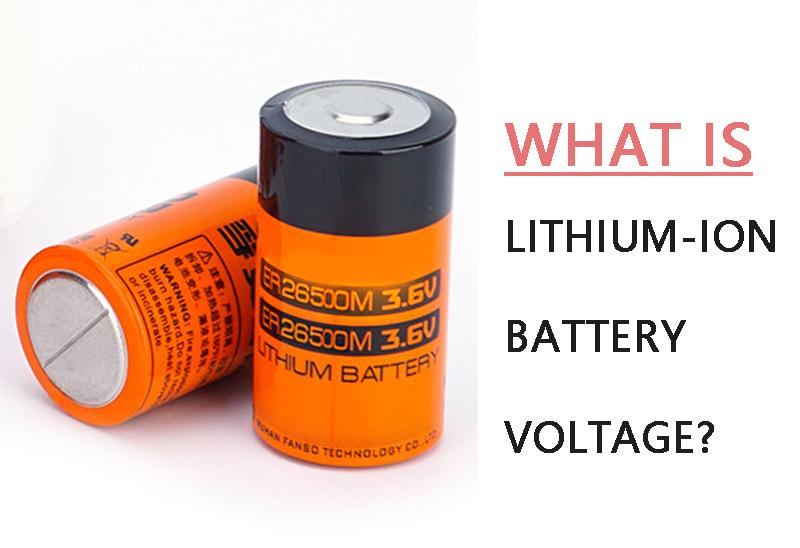
Lithium ion battery voltage (or any other type of battery voltage) is the potential difference between the positive and negative electrodes of your battery. A ternary lithium ion battery cell has 4.2V when fully charged, and its nominal battery voltage of 3.7V.
Check this out: Your lithium-ion battery voltage can be increased in series. You can have a 14.8-volt Li-ion battery by packing four cells in series to increase the battery's voltage.
2.How your li-ion battery voltage changes during charging and discharging?
Your lithium ion battery voltage changes as you continually use it or when charging it after it has lost all its charge. In other words, your battery charges and discharges. At times, it will start discharging without being used (self discharge). Check out how charging and discharging affects voltage in your Li-ion battery.
①Discharging
Knowing when your lithium ion battery voltage is dead (lost all its charge) is important. A healthy Li-ion battery cell has 2.5-2.75V when completely discharged. The battery has an automatic cut-off that helps prevent damage if the battery continues to discharge further. The cut-off usually kicks in at around 3V as it is the battery’s minimum safe voltage. This cut-off function is provided by the lithium battery and the battery management system.
A typical Li-ion battery can have up to 4,000 cycles (approximately 3.5 percent per month, assuming room temperature). The battery can further suffer from permanent capacity loss if it remains unused for more than a year.You can maximize shelf life by placing your battery away from metallic objects. Apart from doing that, it would be best if you’d store your Li-ion battery in a cool place. Heat reduces the rate at which your battery discharges.
②Charging
You will be able to effectively use your electronic devices when you have fully charged your battery. A healthy and fully-charged Li-ion battery has a voltage of 4.2V. However, there are times when your device may overcharge. The battery has, yet again, a cut-off that prevents a Li-ion battery cell from overcharging past 4.2V - the battery’s maximum safe voltage.
Here’s the truth: Recharging your Li-ion battery can be dangerous, especially when it has gone below its minimum safe voltage due to shelf life. The battery could cause an explosion brought by copper shunts build-up, causing shorts,it will produce very large current and heat, with the possibility of explosion.
Here’s the deal: You need to be extremely careful when charging a Li-ion battery that has stayed more than 12 months without being used. The only way to know if your battery is still useful is to measure its lithium ion battery voltage above or below the minimum safe voltage.
3.How to select the ideal charger for your lithium ion battery voltage?

When charging, say, your 3.7V Li-ion battery, it will charge up to 4.2V (max. safe voltage). You can use a 5V charger because the charging voltage has to be higher than the maximum safe voltage, in this case, 4.2V.
Here’s what happens when you charge your lithium-ion battery: Your battery’s charger has dedicated integrated circuits (ICs) that control the charging. It does not control the 5V that flows into your battery. When your Li-ion battery charges, it uses a constant current until its voltage reaches a certain value. It then switches to using a constant voltage power supply until it achieves its maximum safe voltage and stops charging.Doing so is necessary as it prevents overvoltage, which would otherwise damage the battery or, in extreme cases, may cause an explosion.
4.How to measure your lithium ion battery voltage?
As you’ve read earlier, checking if your Li-ion battery is dead is important. You can do so by checking your lithium ion battery voltage. It can help you prevent a huge disaster.The best way to do it is by using a multimeter. The multimeter is quite an effective tool as it can measure your battery's voltage, resistance, and current for a standard multimeter.
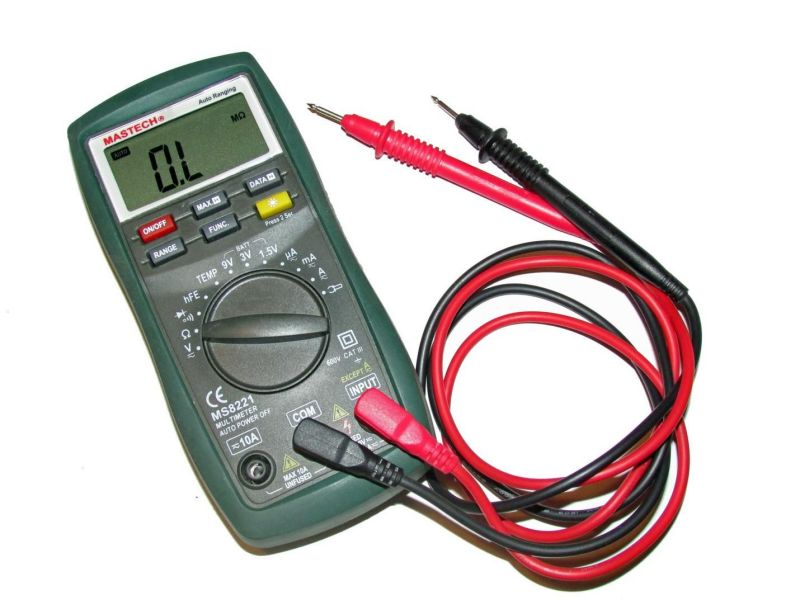
Other advanced multimeters may have other cool features that you'll find helpful. Here's a step-by-step guide on how to use a multimeter. It'll help you get the correct voltage readings on your Li-ion battery.You’ll first need to set the multimeter to voltage mode. At this point, it would be best to note that your multimeter’s capability should fall within your Li-ion battery voltage.
The multimeter has two leads, each color-coded according to its charge. Put the red and the black leads from the multimeter over the battery's positive and negative charges, respectively.Note down the voltage reading your multimeter displays. For example, if you have a 12V Li-ion battery, its voltage range should be 10-14.62V. On the other hand, a fully charged 12V lead-acid battery should have a maximum reading of 12.7V.If your battery voltage is low, consider charging before using it. Doing so will greatly help prevent premature battery failure.
5.Does more voltage mean more power?
Higher voltage does not entirely mean more power. It only means a higher electric potential difference.
Consider this example:Suppose you have LED lights requiring 2 volts to light up; having a 4.2V or a 16.8V Li-ion battery will not matter greatly. The LED lights can comfortably draw enough current from either of the two batteries.

In that regard, you can have both 24V and 12V Li-ion batteries. The 24V battery does not mean that it has more power than the 12V battery. And the former doesn't necessarily have more energy than the latter. If the former capacity is 50ah and the latter capacity is 150ah, then 12 volt 150ah lithium battery has more power (24vx50ah=1200w,12vx150ah=1800w). It's important to understand that voltage numbers, such as 12V or even 24V, only represent the maximum electric potential (voltage) in your Li-ion and other types of batteries.
6.Normal lithium ion battery voltage
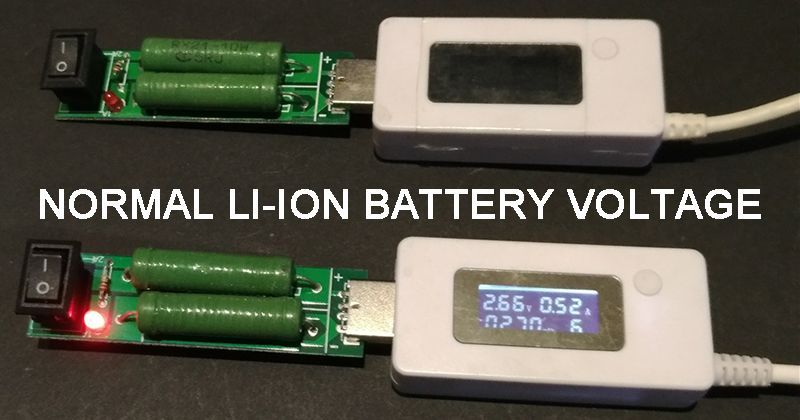
A typical lithium-ion battery has a nominal voltage of 3.7V per cell. You can have a series of Li-ion battery cells forming a battery pack. The pack in series can have voltages in 3.7V steps - for example, and a 3-cell Li-ion battery will have a nominal voltage of 11.1V, a 10-cell battery will similarly have a nominal voltage of 37V, etc. Lithium-ion batteries come in varying shapes and sizes depending on their intended application. You might need your Li-ion battery to power your phone, while your child needs it to power their electric bike.
It's only logical to state that these two Li-ion batteries cannot be similar in size and their electric potential. The difference in electric potential primarily brings the difference in shapes and sizes by connecting Li-ion battery cells in a series. Here’s the deal:It is quite complicated to connect Li-ion battery cells in a series to increase their voltage. Why? The process is complicated because matching the cells must be done to optimize the batteries' performance.
7.Other types of batteries and their voltages
Apart from Li-ion batteries, two other types of batteries are heavily used today - lead-acid and nickel-based.
Check them out:
①Lead-acid battery
A lead-acid battery has a nominal voltage of 2V per cell. Its cells can still be arranged in a series to form a battery pack with a higher voltage. A lead-acid battery will have 1.5V at full discharge and 2.4V at full charge.
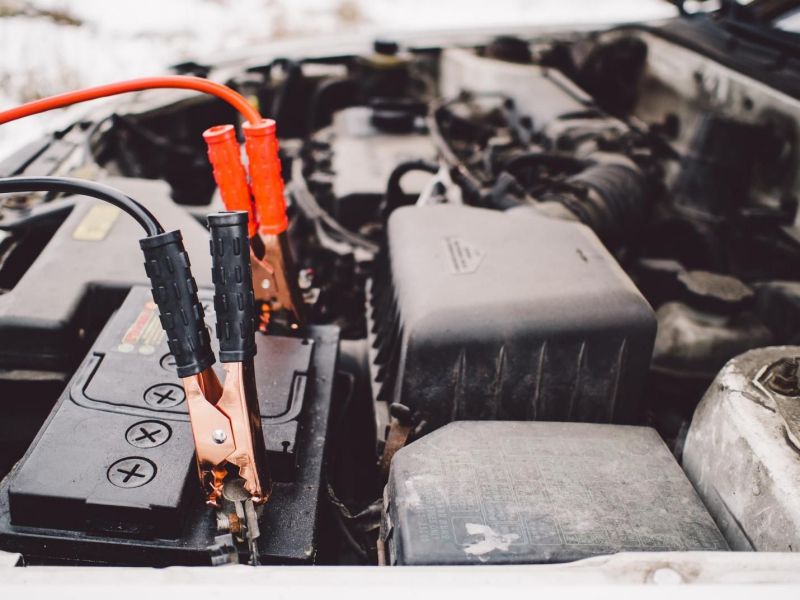
When charging your lead-acid battery, you need to be careful, as overcharging the battery will cause the electrolyte to age prematurely. On top of that, overcharging causes the decomposition of water. Higher rates of overcharging your lead-acid battery will make it heat up progressively. The hotter the battery gets, the more current it accepts (thermal runaway). The process can damage your lead-acid battery in hours. Compared to the Li-ion battery, the lead-acid battery is significantly disadvantaged because the former has a cut-off that prevents overcharging.
Lead-acid battery discharge depth
You cannot discharge your lead-acid battery past 50%. Discharging beyond this point negatively impacts the battery’s life. It is worth noting that you can discharge 85% of your Li-ion battery without damaging it.
②Nickel-based batteries
A single nickel-based battery cell has a nominal voltage of 1.2V. Like Li-ion and lead-acid batteries, you can arrange nickel-based battery cells in a series to increase their voltage. For example, arranging three 1.2V cells will give you a battery pack of 3.6V.

It is important to charge your nickel-based batteries correctly to lengthen their life. Your nickel-based battery can explode should you fail to charge it correctly. Nickel-based batteries are charged using a constant current. However, the nickel-based battery is quite disadvantaged concerning voltage compared to the Li-ion battery. Lithium ion battery voltage per cell is significantly higher than a nickel-based battery. And it will have a memory effect, especially for nickel-chromium batteries. In general, the self-discharge rate of nickel-metal hydride batteries at room temperature is about 15% to 20% per month. On top of that, the nickel-based batteries manufacturing process is quite expensive.
8.Summary
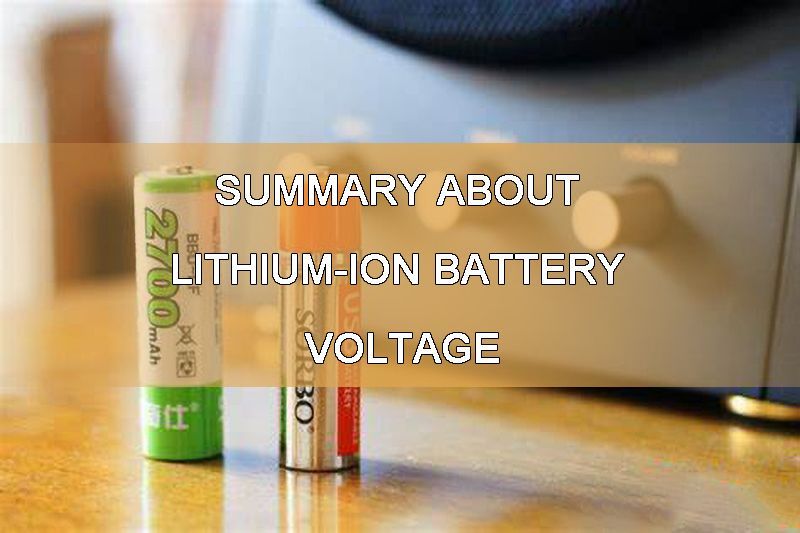
Batteries are important power sources today. Lithium-ion battery voltage is simply the electrical potential your battery can hold. Your lithium-ion battery voltage per cell is 4.2V when fully charged and 2.5-2.75V when completely discharged.The battery has a cut-off in battery management system that prevents it from overcharging and over-discharging (going below 2.5-2.75V). Should your lithium-ion battery voltage go way above the maximum or below the minimum safe voltages, its service life is significantly reduced.
Your Li-ion battery is way better compared to the lead-acid and nickel-based batteries. The lithium ion battery voltage per cell is higher than these two batteries.The Li-ion battery features also make it stand out. The best one is the BMS that helps prevent overcharge and over-discharge. It is also worth noting that the Li-ion batteries are are small and light due to their high energy density.
















